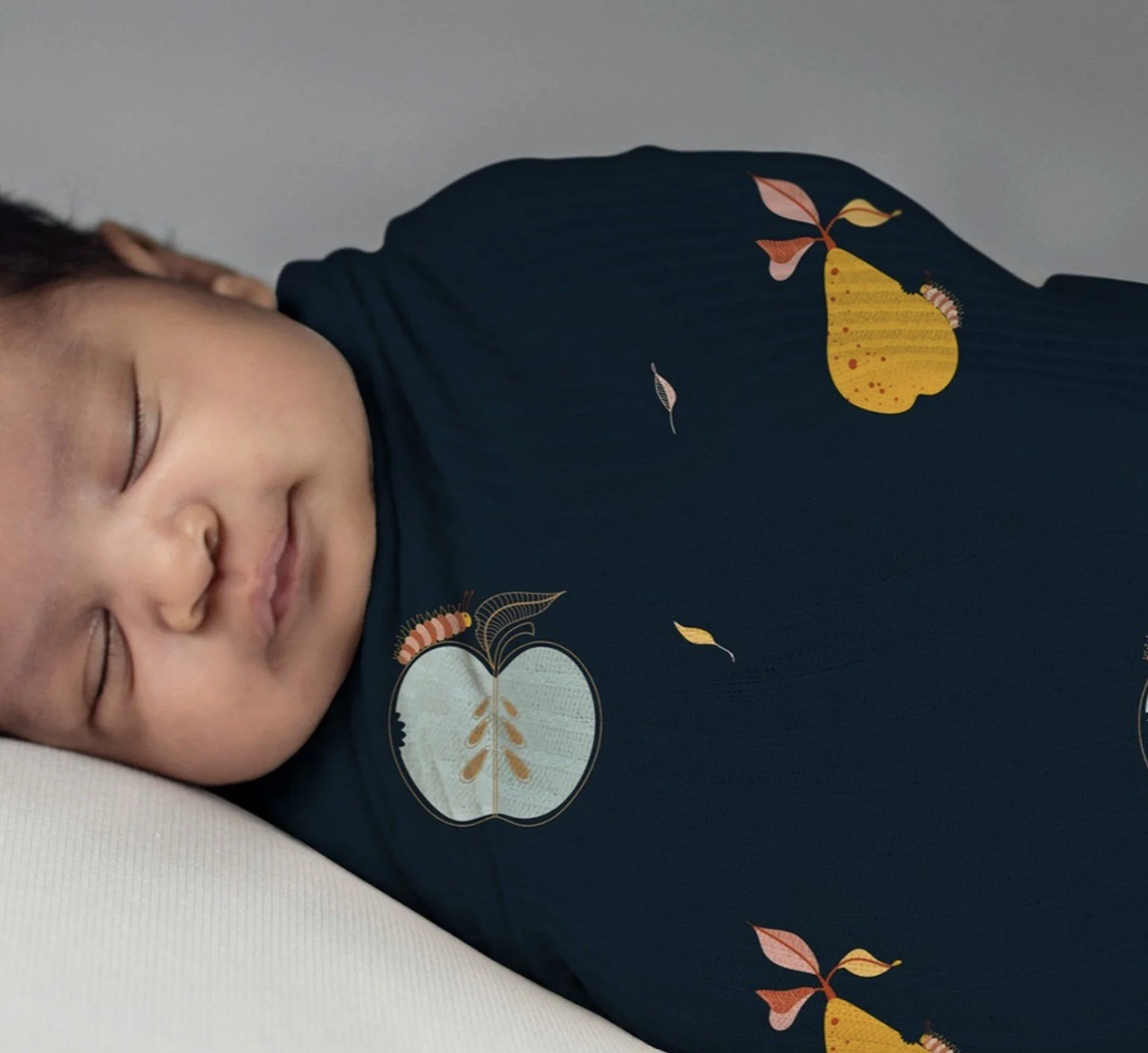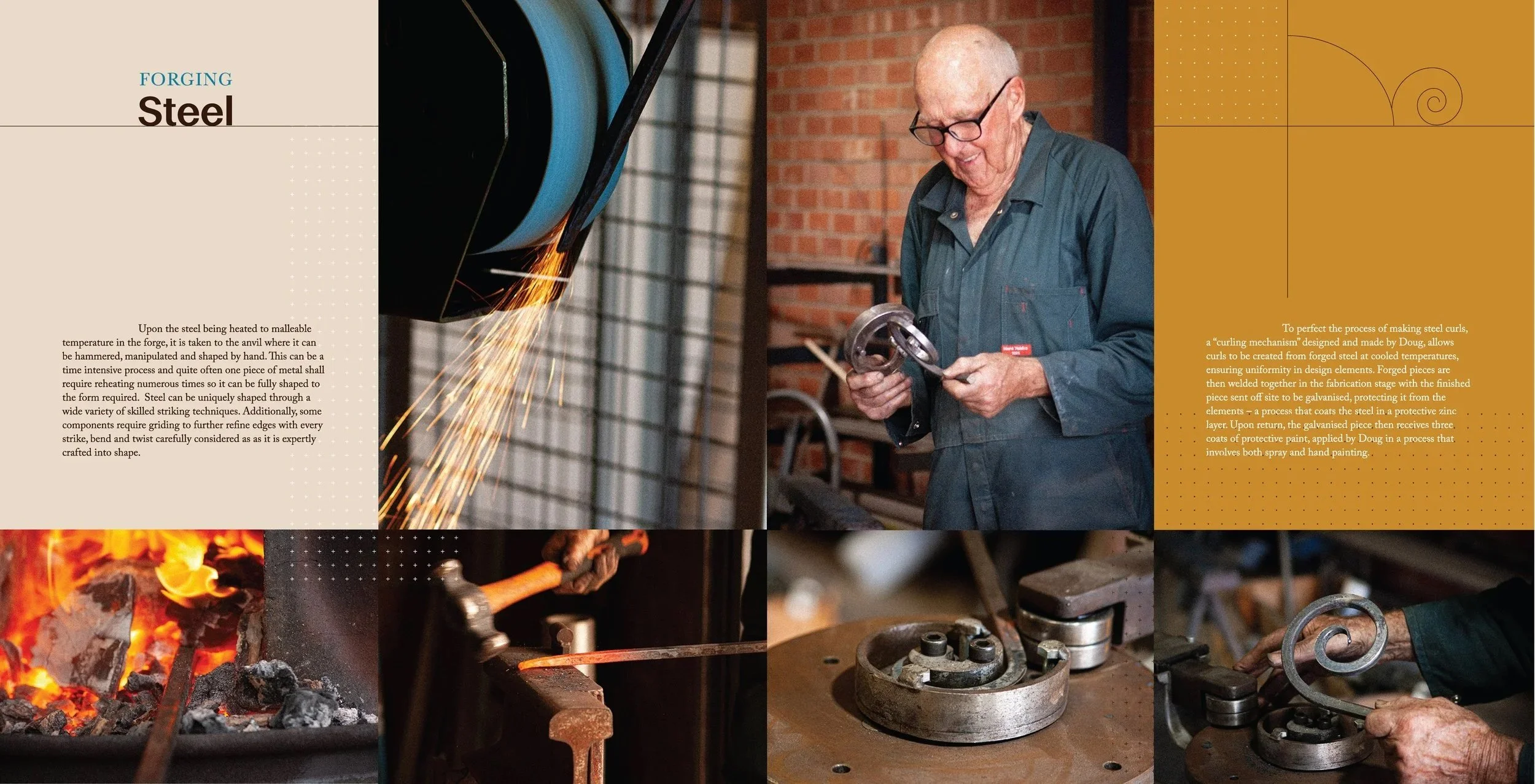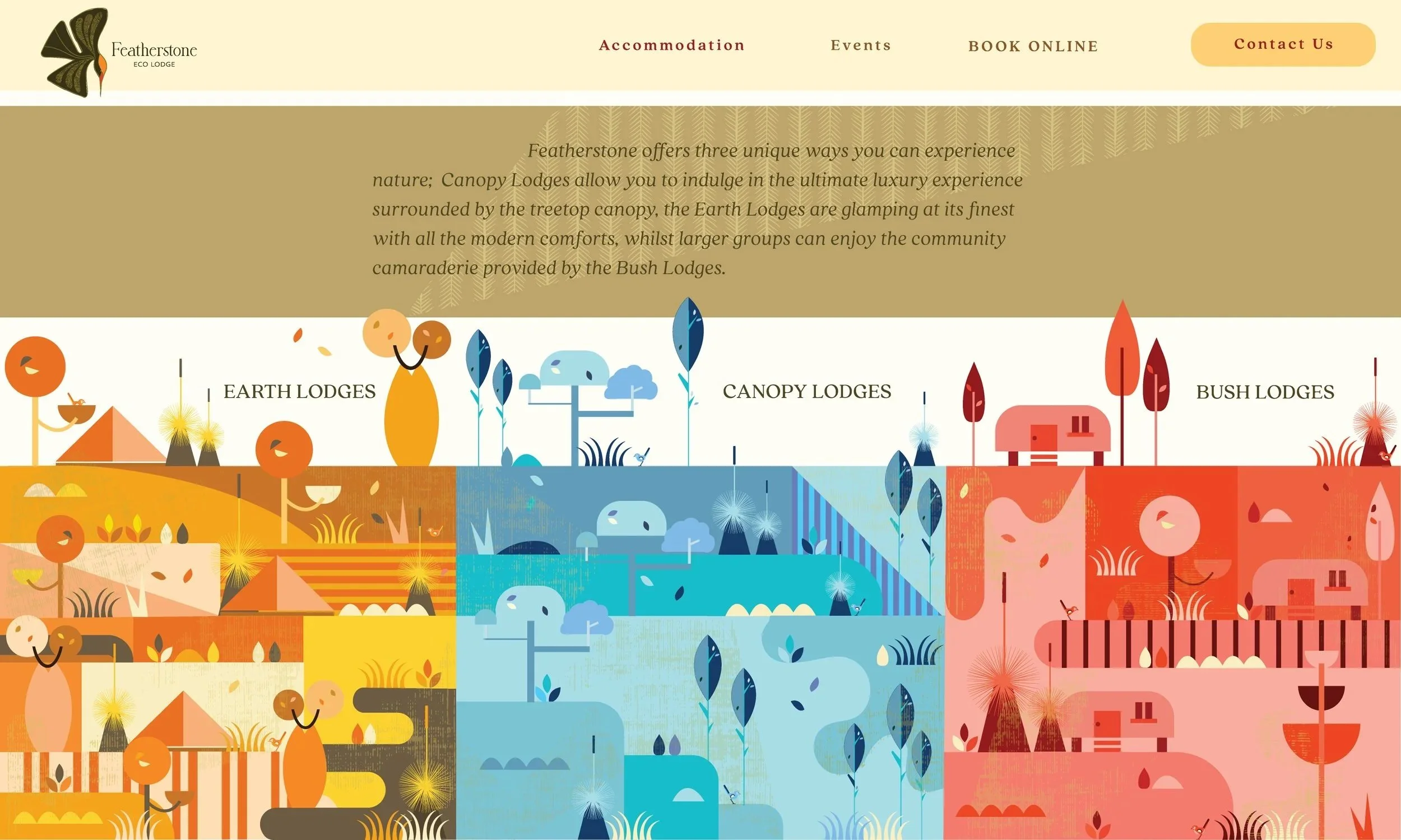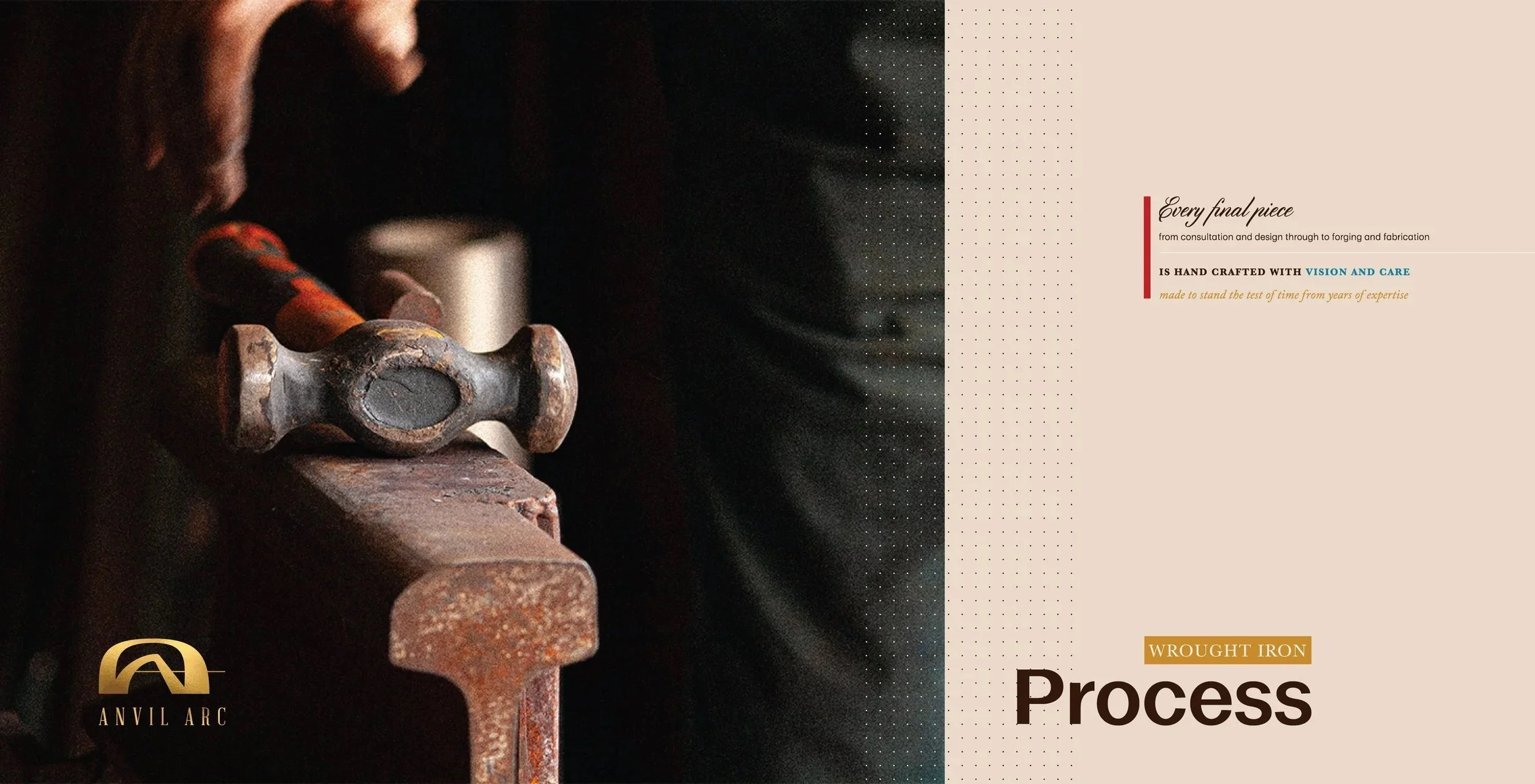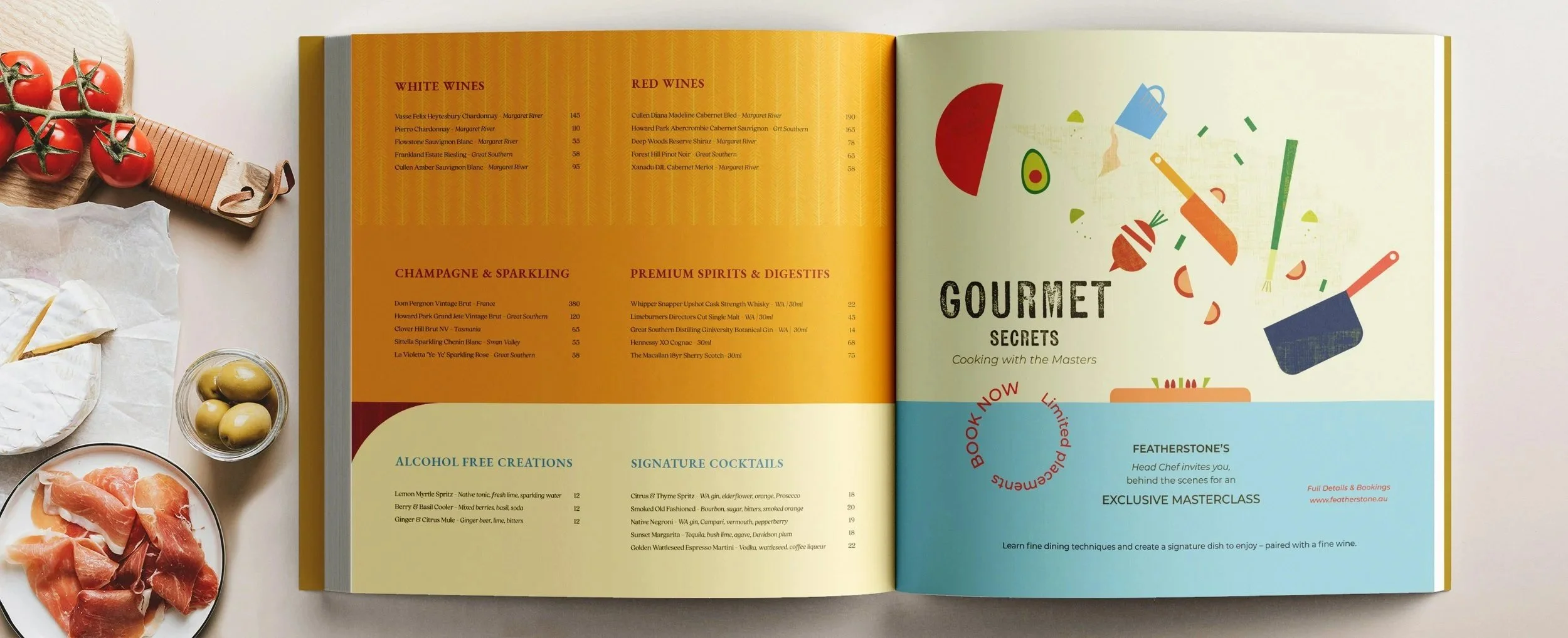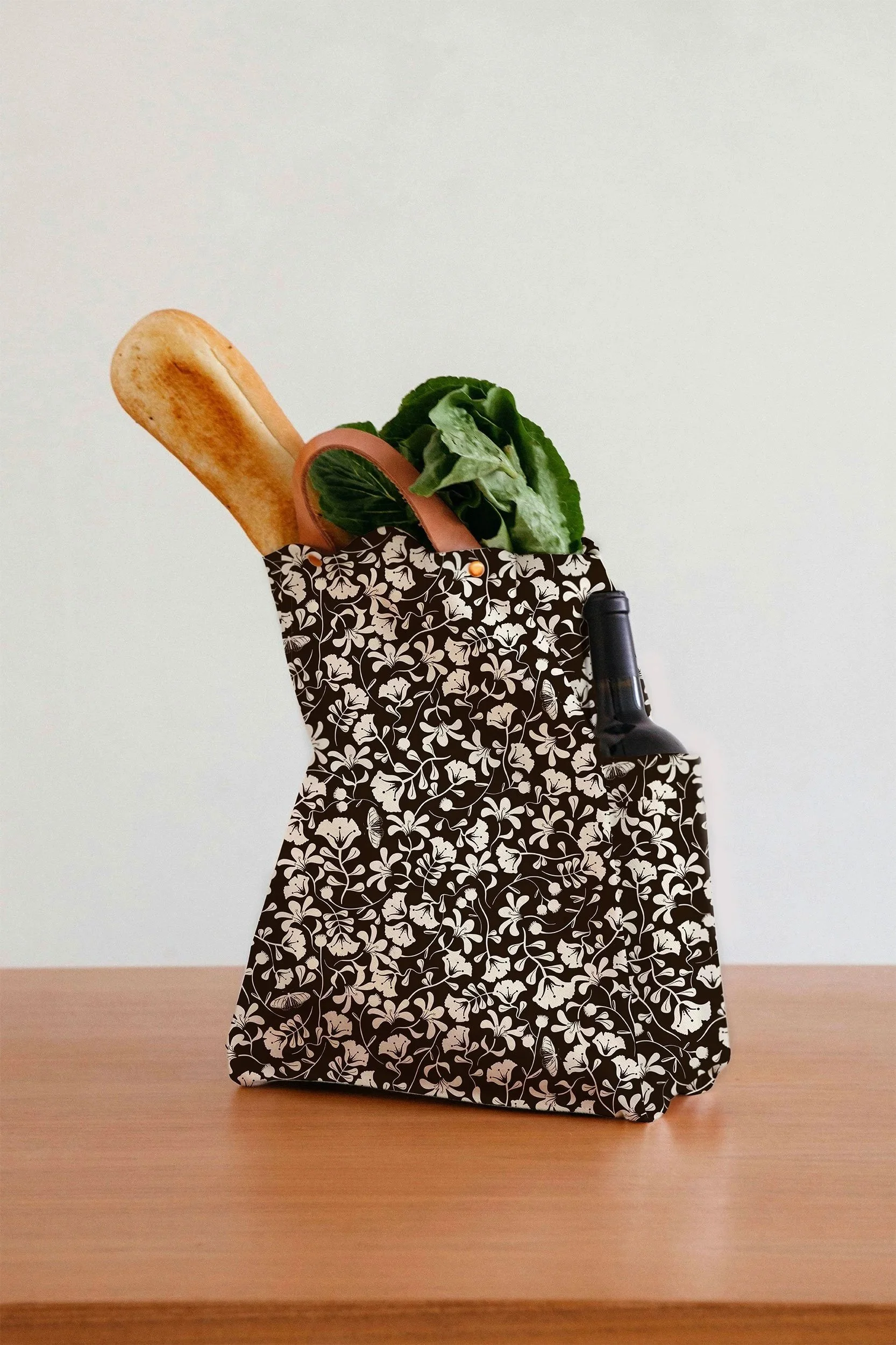“NMTAFE want you to succeed, so use the vast amount of knowledge they have to really excel…”
— ERICA WELSH
How did you first get into design? And how and where has that led you today?
Upon graduating from NMTAFE I started my own graphic design studio, Howling Barn. For the first 6 years the studio specialised in business branding for small and intermediate sized business in both the retail and commercial sector. During this time I often incorporated brand patterns into branding and saw an opportunity to learn and utilise the additional design skill of Surface Pattern Design. In 2025 Howling Barn expanded to include the licensing of seamless repeat patterns.
My Advanced Diploma from NMTAFE enabled me to gain entry into Curtin University with two years of study credit so I could further advance my design qualifications, obtaining a Bachelor in Design Majoring in Graphic Design. My formal education in graphic design has been fundamental in understanding and being able to effectively use design principals, processes, brand strategies, concepts, digital programs/platforms and the art of drawing to create successful and effective branding for clients.
How did you get your first design job or solo exhibition?
Upon graduating from TAFE I established the Howling Barn design studio and created various digital platforms to market the studio such as a website, Instagram and Facebook. My first client came via Facebook and subsequent clients came through the various digital platforms and word of mouth. Joining various Facebook groups for people seeking graphic designers worked well for establishing networks at the initial stages of creating a client base. Instagram worked well for increasing awareness and driving traffic to the Howling Barn website which in turn provided essential information to clients.
What advice would you give to current Art & Design students studying at NM TAFE right now?
When going through TAFE take in as much information as possible, your lecturers have a wealth of experience and expertise in both the units they are teaching and working within the industry... and they are more than pleased to pass it on. Do not be afraid to ask questions, TAFE is THE time to be learning, asking questions and discovering who you are as a designer, you are not expected to know everything. Try different design styles and see what resonates with you as a designer.
As you progress through to the Diploma and Advanced Diploma stages make as many industry contacts as possible, go to events, speak to your lecturers about various design studios and other industries which use designers so you can get an idea of where you would like to work when you finish. Find out which skills would be a huge advantage for where you would like to work and work hard at being the best you can so you will stand out when you go for interviews. Get whatever experience you can through internships or anywhere so when you apply for design positions you have references and experience you can add to your CV. Soak in a much information as you can and enjoy the freedom to learn without being expected to know it yet. NMTAFE want you to succeed, so use the vast amount of knowledge they have to really excel.
What is Perth design in need of most?
I have remained in Perth and have found there are many opportunities for designers however, I believe designers really need to know their strengths and weaknesses and gravitate towards being a designer within those industries.
For students interested in business branding, Perth could better provide stronger pathways that connect graduates directly to industries which require this type of design, such as ongoing/long term mentorships throughout their study which provides students with both practical experience and more awareness of the realities of particular fields of design. It would also help students build practical connections and provides industry the opportunity to get to know upcoming designers they may wish to employ and help provide essential advice to them.
What do you think are the most important qualities in an emerging designer or artist?
I feel the most important qualities in an emerging designer, especially in business branding, is a willingness and strong desire to constantly learn, stretch their design capabilities and seek excellence in what they do. Equally important is curiosity and critical thinking - not just producing design for design sake but asking and understanding the "why" behind their designs; who is the market, what is it for, what does it need to do, what is the most important communication the design must relay, will it connect and will it be effective. Branding is about meaning and effective communication, not decoration, so an emerging designer needs to balance creativity with strategy, ensuring their work aligns with a client's values and resonates with the intended audience.
Let’s talk about new developments happening right now in the Art & Design industry. What are you most excited by.
AI is increasingly being recognised as a supportive tool within the design process, particularly for tasks that are time-consuming but not necessarily creative. Rather than replacing the role of the designer, AI can assist by automating aspects such as generating mockups, resizing assets across platforms and exploring colour palettes. This type of efficiency allows branding designers to focus their energy on strategic and creative concepts and design. In this way AI assists in streamlining workflow.
